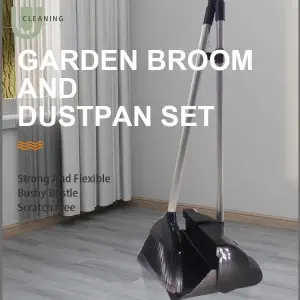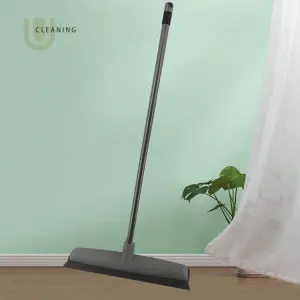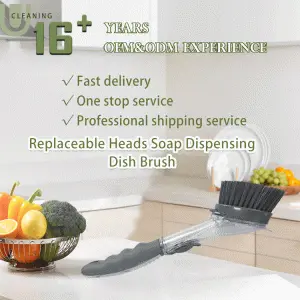Brush and broom are two of the most common and essential cleaning tools used worldwide. These simple tools play a crucial role in maintaining hygiene and cleanliness in households, commercial spaces, and even industrial facilities. In this article, we explore the differences between a brush and a broom, their uses, and how to choose the right one for your cleaning needs.
What is a Brush?
A brush is a cleaning tool with bristles attached to a handle. It is designed for a variety of cleaning tasks, including sweeping floors, cleaning sinks, bathtubs, and other hard surfaces. Brushes come in different sizes, shapes, and bristle materials to accommodate different cleaning needs. Common types of brushes include a floor brush, a kitchen brush, and a toilet brush.
What is a Broom?
A broom is a long-handled brush with a cluster of bristles at one end. It is primarily used for sweeping floors and removing dry debris from smooth surfaces. Brooms are available in various materials, including wood, fiberglass, and nylon bristles. Some brooms also come with dustpans to make cleanup even easier.
Key Differences between a Brush and a Broom
The main difference between a brush and a broom is their design and intended use. A brush generally has shorter handles and is more maneuverable, making it easier to clean hard-to-reach areas and smaller spaces. It is also designed for more abrasive tasks like scrubbing hard surfaces. Brooms, on the other hand, have longer handles and are better suited for sweeping large areas such as floors. They are also more suitable for removing dry debris from smooth surfaces.
How to Choose the Right Brush or Broom for Your Cleaning Needs
When choosing a brush or broom, consider the following factors:
Material: The type of material the brush or broom is made of can affect its durability and performance. Brushes are often made of plastic or metal, while brooms may be made of wood, fiberglass, or nylon bristles. Choose materials that are sturdy, long-lasting, and easy to clean.
Bristle Material and Softness: The type of bristle material and its softness can vary depending on the cleaning task you need to perform. Softer bristles are gentler on surfaces and are suitable for cleaning delicate items or sensitive surfaces. Harder bristles are better for scrubbing stubborn dirt or scum from hard surfaces.
Handle Length: The length of the handle can affect how easy it is to maneuver the tool and reduce back strain when cleaning. If you have limited space or need to clean in awkward positions, choose a brush or broom with a shorter handle. If you need to clean large areas or need extra leverage for scrubbing, choose a longer-handled broom.
Size: The size of the brush or broom can determine how well it fits into small spaces and how easily it can be stored when not in use. Choose brushes and brooms that are compact enough to fit into tight spaces but also have enough surface area to cover large areas quickly.
Functionality: Consider the type of cleaning task you need to perform when choosing a brush or broom. Brushes come in various shapes and sizes for different tasks like cleaning sinks, bathtubs, hard floors, and windowsills. Brooms are primarily used for floor sweeping, although some models also have dustpans for quick cleanup.
Personal Preference: Finally, consider personal preference when choosing brushes or brooms that fit your unique cleaning style and needs. Try different models to see which ones work best for you based on ease of use, cleaning effectiveness, durability, and value for money spent.
Post time: Sep-25-2023




